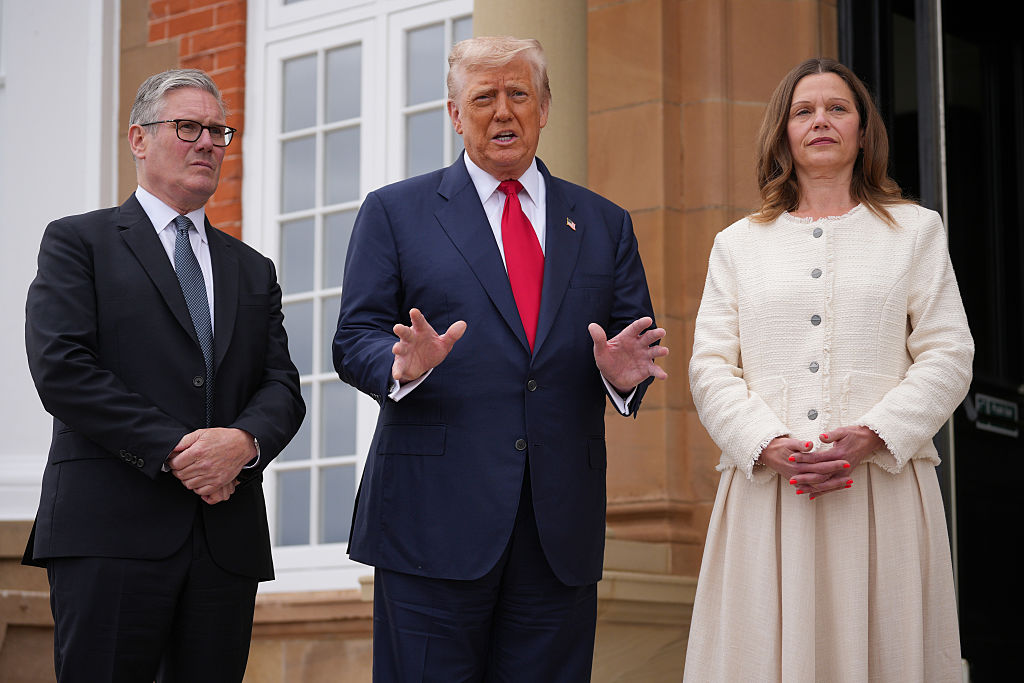How did it come to this? How did we arrive at a situation where it fell to a court of law to tell us what a woman is? That’s my overriding emotion today. I’m delighted the UK Supreme Court has ruled that a woman is legally defined as a person with female biological characteristics. But I’m gobsmacked that we apparently needed five judges to tell us something our species has known since we first came down from the trees.
The ruling of the Supreme Court is fantastically sensible. It unambiguously states that the sex-based rights outlined in the Equality Act 2010 are based on biological sex. So where the Act refers to “women,” it means biological women. And where it refers to “sex,” it means biological sex. This means it is now the law of the land that, legally at least, the word “woman” does not include men who identify as women – no, just women; real women.
The ruling is a devastating blow for the Scottish government. It had argued that trans people with a gender-recognition certificate are entitled to sex-based protections. In other words, a man with a piece of paper saying he’s a woman should be free to waltz into women-only spaces. But it was challenged by the heroines of For Women Scotland, who insisted that only people born female – actual women – should enjoy the sex-based protections of the Equality Act. And they won.
We should relish this rare victory for reason in these volatile times. A government certificate no more makes a man into a woman than Rachel Dolezal’s fake tan makes her black, and it’s wonderful that the highest court in the land now recognizes this. For the purposes of equality law, the ruling says, “the concept of sex is binary, a person is either a woman or a man.” This means that legal protections for women “necessarily exclude men.”
Yes! This is what so-called “TERFs” – i.e. women who understand science and desire equality – have been arguing for years. That men have no place in women-only areas. Whether it’s a 6’5″ fella with a beard or a man who’s been prescribed estrogen and given a government document saying “WOMAN,” he should be excluded, by virtue of his sex, from women’s spaces. This ruling restores the dignity of women that the trans ideology so enviously undermined.
My favorite part of the ruling is its reliance on the everyday understanding of words like “men” and “women.” The “ordinary meaning of those plain and unambiguous words” is that there are certain “biological characteristics that make an individual a man or woman,” it says. It should be “self-explanatory,” it continues, that when people say men, they mean men, and when they say women, they mean women. It should “require no further explanation.”
What an excellent assertion of the universalism of our language, of the fundamental truths contained in the words we use. Ours is an era of willful obscurantism. We’re instructed to use alien phrases like “ciswomen” or “genderfluid.” We’re told we shouldn’t “assume someone’s gender.” We must inquire about people’s pronouns. This cruel imposition of a strange new tongue has chipped away at our common, centuries-long understanding of sex and truth. So how refreshing to read this ruling that says it’s all “self-explanatory” – men are men, women are women, The End.
And yet, that question lingers: why did we need this? It is surreal, and more than a little shaming, that women had to go to the courts to establish what a woman is. To fight not only for the rights of women but for the reality of womanhood. To say to the world: “Men are not women!” It is a testament to the lunacy of our times that we needed judges to tell us what everyone over the age of five once automatically knew: that women are real, and they don’t have penises.
This morning, women across the UK were essentially waiting to hear their fate. They waited to hear whether their rights to privacy and dignity would be restored or further shattered. Lesbians waited too, curious to know if their hard-won right to have their own, bloke-free spaces would be upheld or dismantled. All found themselves at the mercy of five judges. That should never have happened. Nothing better captures the regressive tyranny of identity politics than the fact that women’s rights and lesbian rights teetered so precariously on the edge of destruction.
What sweet relief, then, that the judges made the right decision. But the garlands should go to For Women Scotland. Through their tenacity, they have struck the most brilliant blow for women’s rights, scientific truth and Enlightenment itself. Everyone – male and female – owes them a debt of gratitude.

























